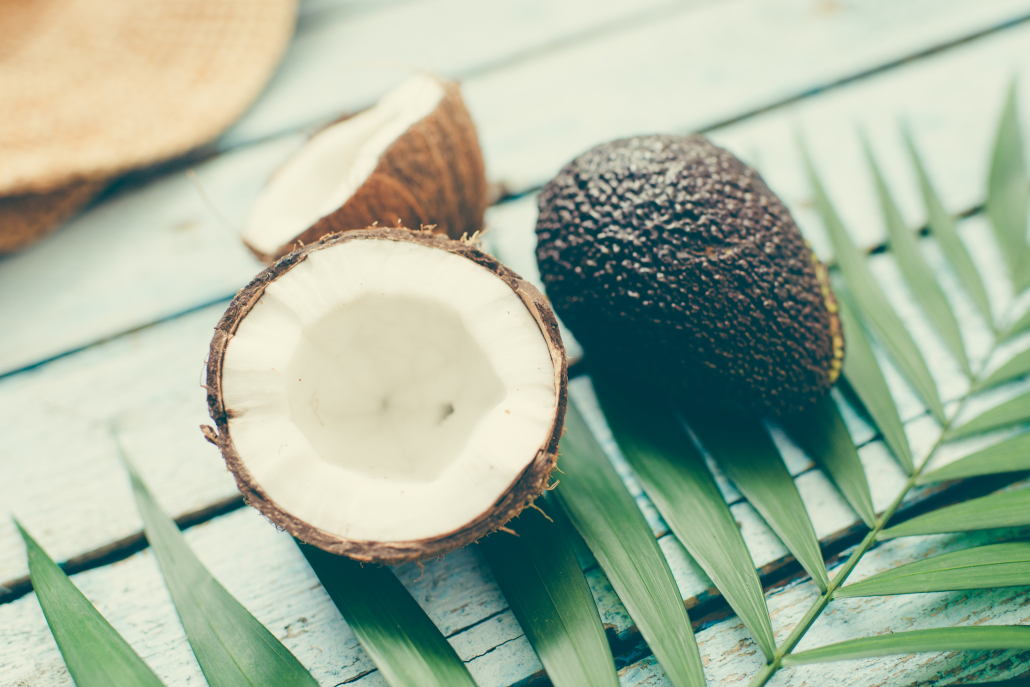We include products in articles we think are useful for our readers. If you buy products or services through links on our website, we may earn a small commission.
Is Fruit Bad for You? What the Science Says
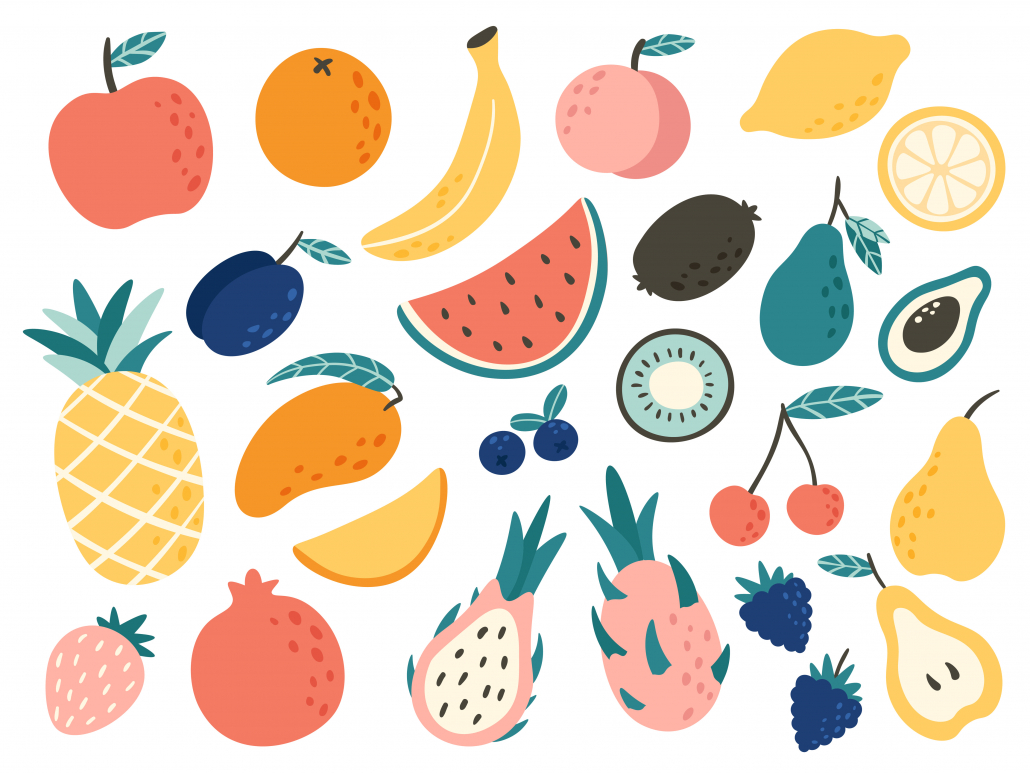
Table of Contents
Most people enjoy eating fruit, it’s a near-universal health recommendation, and even some centenarians attribute their longevity to it–but can fruit be bad for you?
The short answer is, it depends…
Fruit, unlike vegetables, is the only part of the plant that is meant to be eaten by humans and other animals. That’s why it’s sweet, hanging there for us to pick, and a natural laxative. Since plants don’t have feet or wings, they count on creatures like us to eat their fruit, carry the seeds away, and spread them far and wide.
For most people not on a keto diet, moderate consumption of low sugar fruits is probably fine. But not all fruits are equal, and for groups of people with insulin resistance and carbohydrate sensitivity, fruit does have its downsides.
This article will take a science-based look at the pros and cons of eating fruit.
FAST FACTS
- Fruits may be delicious — but they’re not essential.
- They are the only part of the plant meant to be eaten by humans and other predators.
- The plant chemicals in fruit are likely less harmful than those found in vegetables
- The antioxidants in fruit are poorly absorbed and not proven to be beneficial.
- Fruit juices are harmful to your health.
- The sugar content in fruit means that people on high-fat low-carb (keto) diets will need to choose low-sugar fruits and limit consumption.
- If you love fruit, focus on high-antioxidant low-sugar varieties, like berries.
- If you don’t have any sensitivities and are at a healthy weight, small to moderate servings of quality whole fruit are likely not bad for you.
What is Fruit?
Fruit is the seed-bearing part of various flowering plants. All fruits have seeds — though these seeds are more noticeable in some fruits than others. Plants that bear fruit grow exclusively above ground.
Fruit has existed since before humans and was a central part of hominin (pre-human ancestors) diets. When seasonally available, fruit continued to be a part of our ancestral human diets, though it filled a much smaller role as we learned to scavenge and hunt more nutrient-dense bone marrow and meat.
The fruit that was eaten by our ancient ancestors looked nothing like it does today. It was likely smaller, more fibrous, and less sweet. What we think of as fruit has been engineered through breeding and genetic modification to look, feel, and taste as it does–often referred to as “frankenfruit.”
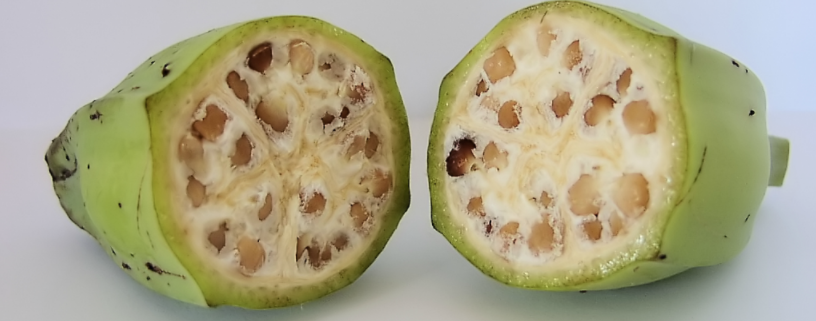
Ancient Banana. (Warut Roonguthai/Wikimedia)
Is fruit bad for you? Though humans have been eating fruit for our entire existence, traditional fruit was smaller, less sweet, and far less available than it is today.
The Nutritional Composition of Fruit
Fruit contains three primary types of nutrients: fructose, fiber, and antioxidants.
| Nutrient | Apple (1 large) | Pear (1 medium) | Blackberries (1 cup) | Fruit Juice (200mL) |
| Fructose | 25 grams | 16 grams | 12 grams | 17 grams |
| Fiber | 5 grams | 6 grams | 13 grams | 0.7 grams |
| Antioxidants | 8% Vit. C RDA | 10% Vit. C RDA | 71% Vit. C RDA | 24% Vit. C RDA |
Fructose
The vast majority of calories in fruit come from sugar. And nearly all of this sugar is in the form of fructose. Most types of fruit contain 5-20 grams of fructose per 100-gram serving.
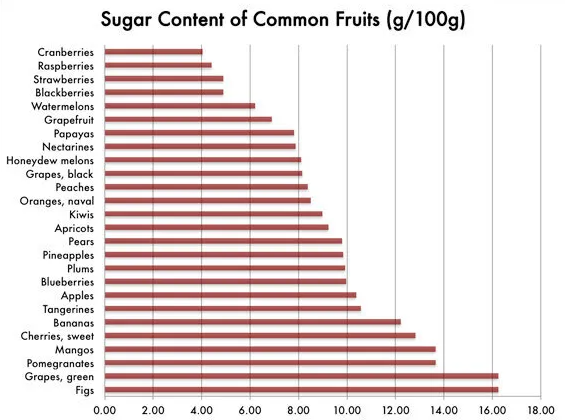
Dried fruits have a much higher fructose ratio since their water content has been reduced by dehydration.
Cultivation methods, weather conditions, and other factors can also affect fructose levels. Many modern fruits are selectively bred for their sweetness — making them higher in fructose.
Is fruit bad for you? If you’re carb-sensitive or insulin resistant, the high levels of fructose in some fruits can increase your risk of sugar related diseases and disorders.
Fiber
Fruit can be a high source of fiber. Avocados are especially high in fiber, and so are various types of citrus fruits.
There are two types of fiber: soluble fiber and insoluble fiber. Insoluble fiber is not absorbed and speeds up digestion. While soluble fiber forms a gel-like substance in the colon and slows digestion down. Fruit usually contains slightly more soluble fiber than vegetables.
Fiber, however, may not be the helpful digestive aid that nutritionists once thought it was. In the past several decades research has shown that fiber may promote bloating, bacterial overgrowth, and gut inflammation.
An eye-opening study in the World Journal of Gastroenterology looking at all the studies over the previous 35 years investigating the link between fiber and colon health, concluded that:
“A strong case cannot be made for a protective effect of dietary fiber against colorectal polyp or cancer. Neither has fiber been found to be useful in chronic constipation and irritable bowel syndrome. It is also not useful in the treatment of perianal conditions. The fiber deficit-diverticulosis theory should also be challenged…we often choose to believe a lie, as a lie repeated often enough by enough people becomes accepted as the truth. We urge clinicians to keep an open mind. Myths about fiber must be debunked and truth installed.”
Is fruit bad for you? Most fruit doesn’t contain enough fiber to be irritating, but when added to a standard American Diet high in plant fibers, fruit fiber can contribute to various fiber-related issues.
Phytochemicals
“Phyto” simply means plant, therefore phytochemicals are a term for the chemical compounds contained in fruits and other plants. We’re told plants are healthy because of their abundance of phytochemicals, which often have antioxidant properties.
What are Antioxidants?
You’ve probably heard that antioxidants are good for you, but why?
Molecules like to have a balance of positive and negative charges, but pro-oxidants, AKA free-radicals, are missing a negatively charged electron. So they rip electrons from other cells and DNA, causing damage as they gather their balanced charge.
Antioxidants do battle with these rampaging free-radicals.
However, in healthy people, both pro-oxidants and antioxidants are in balance. Each plays its essential role in our bodies. Getting extra antioxidants through diet or supplements is only important when you have an overabundance of pro-oxidants.
Refined carbohydrates are pro-oxidants. So when eating a Western diet high in refined carbohydrates, there is often a need for more antioxidants. But, as we’ll see next, plants are likely not a great place to get them.
Antioxidants in Fruit
Most fruits contain plant chemicals that function as antioxidants. The most famous of these is the vitamin C found in oranges. Other plant antioxidants attracting new attention including resveratrol and quercetin, which we’ll look at shortly.
Antioxidants are generally good for us. But the antioxidants found in most fruits aren’t very bioavailable; meaning they’re poorly absorbed and utilized by the human body.
A 2009 study found that unlike the antioxidant compounds (like cholesterol) and vitamins we get from animal sources, “phytochemicals as dietary components are not essential for short-term well-being.”
This is because the body has evolved specific ways to accumulate and retain vitamins sourced from animal food–many of which (vitamin A, D, E, and K), require dietary fat for absorption.
Whereas, when we eat fruit, our bodies treat their phytochemicals as non-nutrient xenobiotics–a fancy word for foreign substances that shouldn’t be there. Our bodies respond by rapidly eliminating them.
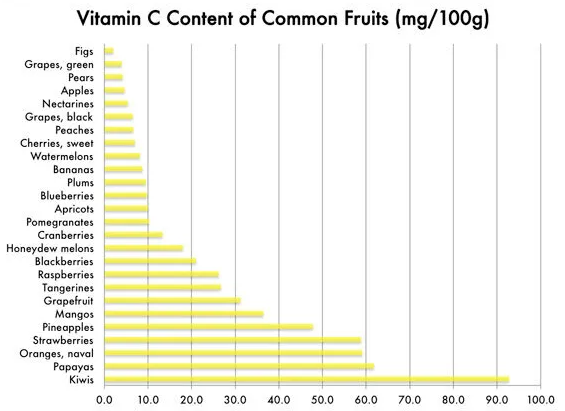
For an example, let’s look at one of the most bioavailable phytochemicals that’s getting a lot of positive attention–quercetin.
Quercetin
Quercetin is a polyphenol, which means it’s one of the pigments that gives plants their color. Common fruits and vegetables that contain the most quercetin include: Apples, apricots, black currants, blueberries, capers, cranberries, and grapes.
About 20% of the quercitin you eat will enter your bloodstream. But it only lasts a few hours.
Some human studies show possible anti-inflammatory and antioxidant effects. But the high doses required to achieve these effects are impossible to get from food.
Resveratrol
Resveratrol is a much-hyped plant chemical with antioxidant properties. It’s the part of red wine that people like to point to as healthy. But despite the hype, our bodies metabolize and expel resveratrol as quickly as possible. Studies show that consistently high resveratrol dosing does not lead to significant amounts of resveratrol entering the brain.
Much of the research on resveratrol has been done in test tubes, and in animals using much higher doses than you could hope to get from food.
The same goes for the limited research on humans, where the compound was delivered in a supplement form in higher doses than you can get from food.
Even antioxidants that are absorbed may not be as beneficial as previously thought. The benefits of vitamin E supplementation, for example, may be caused by saturated fatty acid alcohols like policosanol more than by vitamin E itself.
Is fruit bad for you? Though most fruits contain antioxidants, these phytochemicals may are most often poorly absorbed and not necessary.
Tannins
Tannins are another common phytochemical found in fruits including grapes, blueberries, apple and pear skins, and persimmons. They’re responsible for that dry feeling in your mouth. Plants evolved these chemicals to defend against predators and harsh weather.
Like other phytochemicals, tannins are poorly absorbed and pass all the way to the colon. Along the way, tannins can bind to proteins in the digestive tract. It’s this same protein binding ability that makes them good for tanning leather!
But our intestines aren’t leather, so they often bind to digestive enzymes (which are proteins) leading to digestive problems. They also interfere with our ability to absorb non-heme iron–the iron we get from plants. This is one of the main reasons why our bodies absorb very little plant-based iron. On the other hand, tannins do not interfere with the absorption of heme iron that we get from red meat.
Though some animal studies show that tannins may be beneficial for diabetes and heart disease, and some in vitro studies show the possibility for anti-cancer uses, there have been no clinical studies involving humans.
Other in vitro studies show that tannins can interfere with Topoisomerase II–an enzyme required for the proper function of DNA. This is not surprising when considering that plants evolved tannins for protection against predators–and humans are predators! But there have been no studies conducted looking at if and how this process plays out in humans.
If you’re worried about tannins, you can destroy tannins in fruit by either cooking and drying.
A Balanced Approach to Eating Fruit
A balanced approach to consuming fruits may be to choose varieties that are high in antioxidants and low in fructose. Though our bodies don’t absorb the vast majority of plant antioxidants, getting even a limited amount may be beneficial.
At the same time, choosing low fructose fruits reduces your carbohydrate intake. This is important because many studies have shown that excess carbohydrates are associated with various inflammatory diseases and endometrial cancer.
This two-fold approach can result in lower insulin levels and less overall oxidative stress, i.e reduced wear-and-tear at the biochemical level.
Low-Sugar Fruits
Berries are high in fiber, high in antioxidants, and relatively low in sugar. Most types of berries are only 5-10% net carbs by weight. Bananas and papayas, on the other hand, are over 20% net carbs.)
Berries have a practical benefit, too: their satiety makes them hard to overeat. Many keto dieters are able to incorporate small amounts of berries into their diets without triggering insatiable cravings for more carbs.
Blackberries, raspberries, and strawberries are among the lowest carb fruits. They’re also keto-friendly since they have a high ratio of fiber to sugar.
Is fruit bad for you? Probably not if you eat only small amounts of low-sugar varieties.
Fructose in Fruit Juices and Dried Fruits
Drinking fruit juice is not the same as eating whole fruit. Fruit juice is very high in sugar and usually devoid of fiber, causing a more dramatic spike in blood sugar.
Much of the juice in today’s grocery stores isn’t even ‘real’ fruit juice — it’s fruit juice concentrate mixed with lots of sugar and some water.
Even if juice is “fresh-squeezed” commercial fruits are often picked prematurely, making for fruit juice that is highly acidic. And fruit juice that comes in plastic bottles often has lower antioxidant levels than its fresh-squeezed counterparts.
Fruit smoothies and dried fruits also provide an imbalanced nutrient profile and concentrated source of sugar. Both of these factors contribute to weight gain.
Fruit juice has even been linked to increased rates of cancer — implying that the body treats fruit juice in a similar way to more processed sugary beverages.
A 2019 study linked drinking just one small 100 ml glass of a sugary drink per day, (only a third of a typical can of soda), to an 18% increase in overall cancer risk, and a 22% increase in risk for breast cancer. Surprisingly, the increased risk of cancer in consuming sugary drinks was observed even among consumers of pure fruit juice.
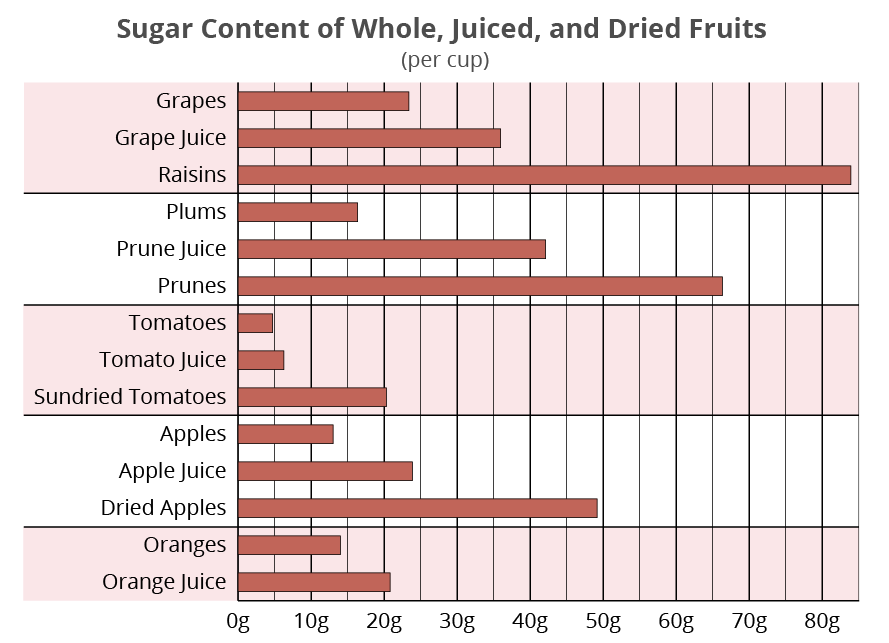
From USDA Food Database
Is fruit bad for you? If taken out of its natural context and placed into a sugar beverage…definitely.
How Much Fruit can you Have?
Your ideal intake depends on your dietary goals.
If you’re eating a standard American diet, your carb intake is already chronically high. So even if you avoid relative blood sugar spikes by choosing low-sugar whole fruit over juice, you’re still subject to the chronic inflammation and elevated levels of insulin, and hormone imbalances associated with hyperglycemia.
The best way to avoid these issues is to pass on the fruit and get your calories from low-to-no carb sources like free range animal meats.
Fruit on Keto
Since most people can thrive on a low-carb/ketogenic diet with less than 30 grams of carbohydrates per day, fruit is totally unnecessary. Many people on the keto diet prefer to get their trace carbs from vegetables and fungi instead.
If you do want to enjoy fruit while staying in ketosis, all it takes is a little planning. You’ll likely be able to eat 1 or 2 servings of fruit a day and stay in ketosis.
For reference, a kiwi contains approximately 10 grams of carbohydrates, while an apple contains 20. Berries remain the safest choice — a cup of blackberries contains only 6 grams of net carbs.
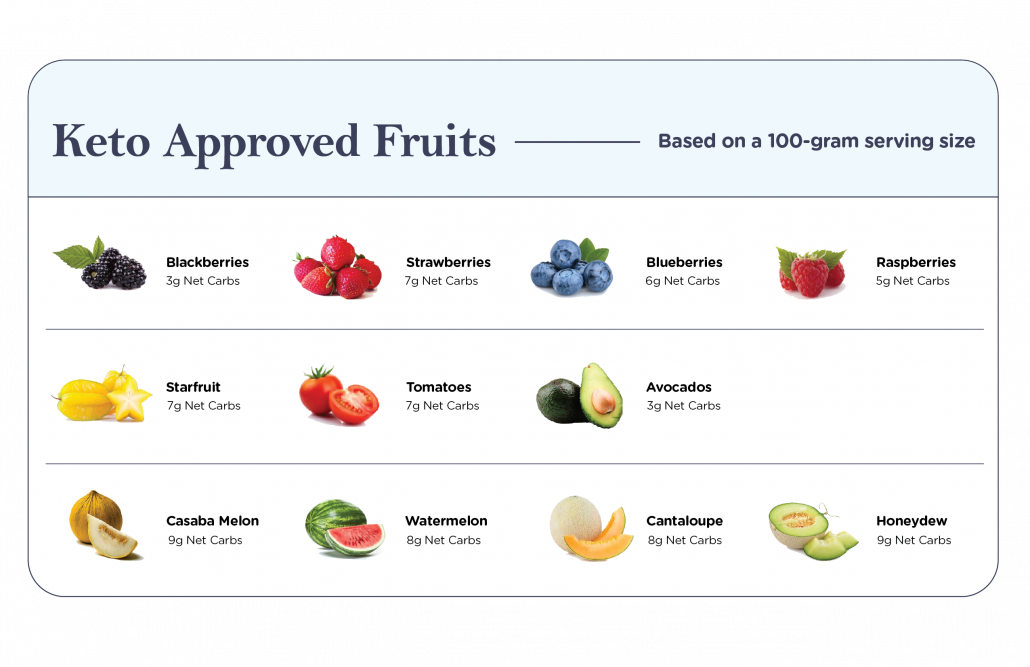
Even a ‘liberal’ keto diet allowing 50 grams of carbs per day should contain no more than 30 grams of carbs from fruit, since the remaining 20 grams is easy to get from trace sources.
Is fruit bad for you? That depends on your goals. If you want to reduce chronically elevated blood sugar levels, or if you’re on a high-fat low-carb keto diet, you’ll want to avoid most fruit.
Risks of Fruit
While small amounts of fruit aren’t likely to be a problem, eating more fructose than your body needs can contribute to diseases like obesity, diabetes, and heart disease.
Obesity
Because our body easily converts fructose into fat, it can directly contribute to obesity if eaten in excess.
While fructose’s unique liver metabolism has led many people to theorize that it’s the driving force of obesity, clinical research hasn’t backed this concept up. A 2012 review of human studies concluded that fructose doesn’t cause more weight gain than other types of sugars on an isocaloric diet.
Another study showed that small amounts of fructose may boost metabolism by signaling to thyroid hormones that the body’s ‘fuel tank’ is full.
In light of these findings, it appears likely that fructose is only obesigenic in the context of a calorie surplus. And calorie surpluses are exactly what the consumption of sugar-laden juices and high-fructose-corn-syrup laden soft drinks promote.
Studies suggest that high-fructose corn syrup, as opposed to regular fructose, may be the main culprit behind metabolic syndrome.
Is fruit bad for you? Yes, if it causes you to eat more calories than your body needs.
Diabetes
In addition to obesity, high fructose consumption can contribute to diabetes.
This might seem counterintuitive at first. After all, fructose doesn’t cause glycemic spikes like glucose does. Yet, fructose contributes to fatty liver disease, which in turn leads to systemic insulin resistance–a precursor to type 2 diabetes.
Up to 35% of American adults and 12% of children have this type of non-alcoholic fatty liver disease (NAFLD), which places them at great risk for developing diabetes or pre-diabetes.
Is fruit bad for you? If coupled with processed foods, it may contribute to insulin resistance and diabetes.
Heart Disease
Studies show that increased sugar intake increases the risk of heart disease. One study of over 30,000 people found that those who consumed roughly twice as much sugar had a 38% greater chance of dying from heart disease.
But more research is needed to determine the specific role of fruit sugars.
Though fructose raises triglycerides more than glucose, it doesn’t impact baseline triglyceride levels any more than glucose does. Fructose may even have an advantage over glucose in terms of optimizing blood pressure.
A simple safeguard against heart disease might be to limit both glucose and fructose.
Is fruit bad for you? Not any worse than glucose, but glucose is pretty bad, so better avoid high sugar fruits.
Will Avoiding Fruits Lead to Nutrient Deficiencies?
A growing number of medical experts (including Dr. Kiltz) believe that fruits offer no essential nutrients that you can’t find in superior sources, namely in animal products.
Grass-fed ruminant animals and their organs are a surprisingly rich source of both fat-soluble vitamins and water-soluble vitamins. They’re also high in important trace minerals and essential fats.
Is fruit bad for you? Not in small doses and on their own. But there are superior food sources to get your essential and bioavailable vitamins and minerals.
Is Fruit Bad for You? The Bottom Line
Fruits may be an optional part of a healthy diet. For people at a healthy weight and without fruit sensitivities or diabetic complications, fruits can be safe and delicious if eaten in moderate quantities.
However, fruits and the nutrients they provide are not essential. Their antioxidants are poorly absorbed by the body. Nose-to-tail, animal-based nutrition can provide virtually everything fruits can — in a much more bioavailable format.
If you don’t have access to grass-fed beef and beef organs, on the other hand, you may want to supplement with moderate amounts of low-antinutrient and/or low-FODMAP fruits.












